
DomCarlos I, known as the Diplomat, the Martyr, and the Oceanographer, among many other names, was King of Portugal from 1889 until his assassination in 1908. He was the first Portuguese king to die a violent death since King Sebastian in 1578.

The title Duke of Braganza in the House of Braganza is one of the most important titles in the peerage of Portugal. Starting in 1640, when the House of Braganza acceded to the throne of Portugal, the male heir of the Portuguese Crown were known as Duke of Braganza, along with their style Prince of Beira or Prince of Brazil. The tradition of the heir to the throne being titled Duke of Braganza was revived by various pretenders after the establishment of the Portuguese Republic on 5 October 1910 to signify their claims to the throne.

Maria Pia de Saxe-Coburgo e Bragança, also known by her literary pseudonym Hilda de Toledano, was a Portuguese writer and journalist who claimed to be the illegitimate daughter of King Carlos I of Portugal. From 1932 she also claimed the right to the title of Duchess of Braganza and to be the rightful heiress to the throne of Portugal.
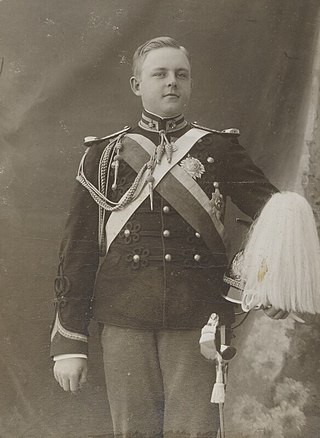
DomLuís Filipe, Prince Royal of Portugal, Duke of Braganza was the eldest son and heir-apparent of King Carlos I of Portugal. He was born in 1887 when his father was still Prince Royal of Portugal and received the usual style of the heirs to the heir of the Portuguese crown: 4th Prince of Beira at birth, with the subsidiary title 14th Duke of Barcelos. After his grandfather King Luís I of Portugal died, he became Prince Royal of Portugal with the subsidiary titles 21st Duke of Braganza, 20th Marquis of Vila Viçosa, 28th count of Barcelos, 25th count of Ourém, 23rd count of Arraiolos and 22nd count of Neiva.

DomFerdinand II was a German prince of the House of Saxe-Coburg and Gotha-Koháry, and King of Portugal jure uxoris as the husband of Queen Maria II, from the birth of their first son in 1837 to her death in 1853.
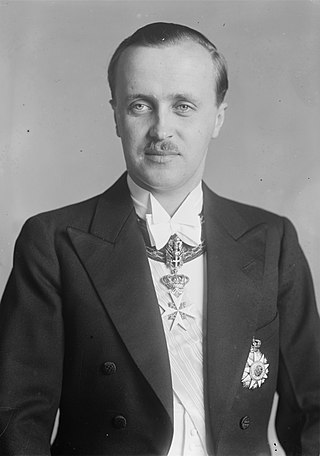
DomDuarte Nuno, Duke of Braganza was the claimant to the defunct Portuguese throne, as both the Miguelist successor of his father, Miguel Januário, Duke of Braganza, and later as the head of the only Brigantine house, after the death of the last ruling Braganza, King Manuel II of Portugal. In 1952, when the Portuguese Laws of Banishment were repealed, the Duke moved his family to Portugal, thus returning the Miguelist Braganzas to their homeland and becoming the first of the former Portuguese royal dynasty to live in Portugal since the abolition of the monarchy in 1910.
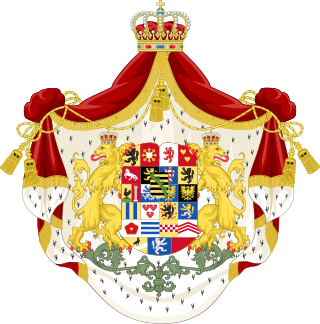
The House of Saxe-Coburg and Gotha is a European royal house. It takes its name from its oldest domain, the Ernestine duchy of Saxe-Coburg and Gotha, and its members later sat on the thrones of Belgium, Bulgaria, Portugal, and the United Kingdom and its dominions.

Infante João, Duke of Beja was a Portuguese infante (prince) and member of the House of Braganza.

Infanta Maria Ana of Portugal was a Portuguese infanta (princess), the eldest surviving daughter of Queen Maria II of Portugal and her King consort, Ferdinand II of Portugal, a member of the House of Braganza.
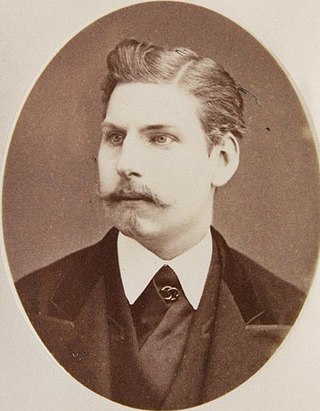
Infante Augusto, Duke of Coimbra was a Portuguese infante (prince) of the House of Braganza.

Infante Dom Afonso of Braganza, Duke of Porto was a Portuguese Infante of the House of Braganza, the son of King Luis I of Portugal and his wife, Maria Pia of Savoy. From 1908 to the abolition of the Portuguese monarchy in 1910 he was the Prince Royal of Portugal as heir presumptive to his nephew, King Manuel II.

Duke of Loulé is a Portuguese title of nobility created by a royal decree of King Luis I of Portugal, dated from October 3, 1862, to his grand-uncle Nuno José Severo de Mendoça Rolim de Moura Barreto, 2nd Marquis of Loulé and 9th Count of Vale de Reis. The new duke descended from earlier Portuguese monarchs and belonged to the highest nobility. After the fall of the monarchy in 1910 and the death of King Manuel II, the Duke of Loulé was acclaimed by his supporters as head of the Portuguese Royal house.

The House of Koháry was the name of an ancient and wealthy Hungarian noble family with seats at Csábrág and Szitnya and the palace of Szentantal.

Ferdinand Philipp Maria August Raphael of Saxe-Coburg and Gotha was the second prince of Saxe-Coburg and Gotha and lord of Csábrág and Szitnya, both in modern-day Slovakia.

In the history of Portugal, a Miguelist is a supporter of the legitimacy of the king Miguel I of Portugal and his descendants.

Prince Miguel of Braganza, Duke of Viseu was a member of the exiled branch of the House of Braganza. The eldest son of the Miguelist pretender to the throne of Portugal he married an American heiress in 1909 and in 1920 renounced his rights to the throne. His full given names were Miguel Maria Sebastião Maximiliano Rafael Gabriel Gonzaga Francisco de Assis e de Paula Eustáquio Carlos Afonso José Henrique Alberto Clemente Inácio Martinho António Gerardo Jorge Emerico Maurício.

Princess Maria Theresa of Braganza was a member of the House of Braganza. Through her marriage to Prince Karl Ludwig of Thurn and Taxis, Maria Theresa was also a member of the House of Thurn and Taxis.
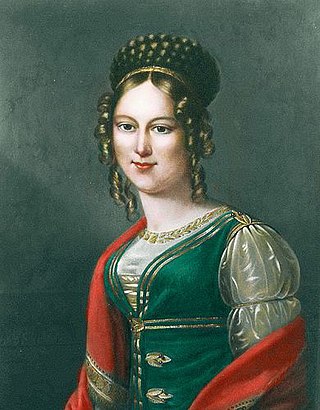
Princess Mária Antónia Gabriella Koháry de Csábrág et Szitnya was a Hungarian noblewoman and the ancestor of several European monarchs. She was the sole heiress of the House of Koháry, which belonged to one of the three largest landowners in Hungary.

The House of Saxe-Coburg and Gotha-Koháry is the Catholic cadet branch of the House of Saxe-Coburg and Gotha, founded after the marriage of Prince Ferdinand of Saxe-Coburg and Gotha and Princess Maria Antonia Koháry de Csábrág. Among its descendants were the last four kings of Portugal and the last three Tsars of Bulgaria. After the change of the “House laws” by Simeon II, the present head of the house is his sister Princess Marie Louise of Bulgaria, Princess of Koháry.























